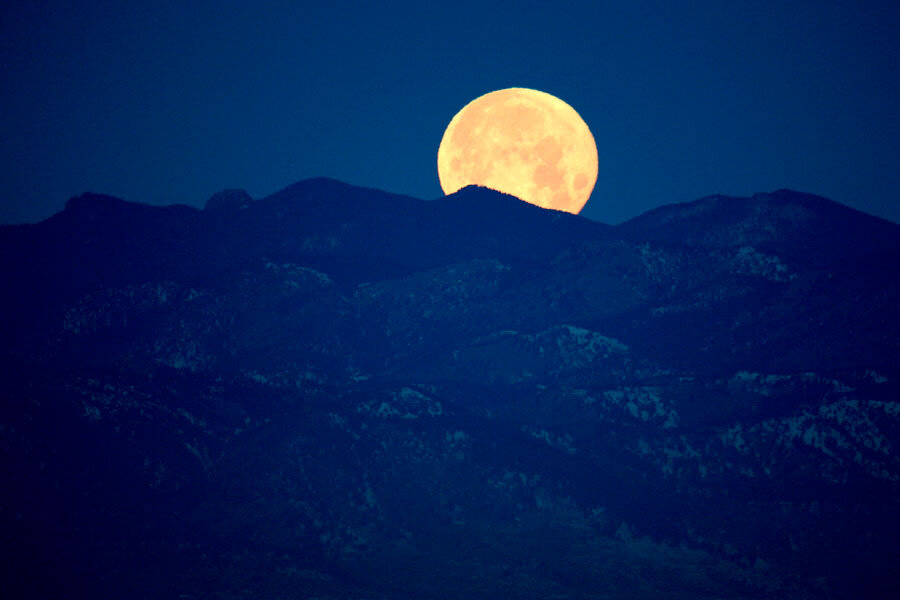Does the moon influence rainfall? Scientists reveal odd link.
Loading...
When the moon is directly overhead, less rain falls, scientists from the University of Washington (UW) recently discovered.
UW doctoral student in atmospheric sciences Tsubasa Kohyama suspected there might be a correlation between atmospheric waves and oscillating air pressure. To confirm his suspicions, Kohyama and his atmospheric sciences professor John Wallace began studying years of data.
And 15 years of data from 1998 to 2012 collected by NASA and the Japan Aerospace Exploration Agency’s Tropical Rainfall Measuring Mission (TRMM) confirmed the scientists' assumption: Earth’s rainfall is connected to the moon.
“When the moon is overhead or underfoot, the air pressure is higher,” Kohyama explained in a statement, allowing for more moisture. “It’s like the container becomes larger at higher pressure.”
In other words, when the moon is high overhead – or at its peak – its gravitational pull causes the Earth’s atmosphere to bulge towards it, simultaneously increasing atmospheric pressure. Higher pressure increases air temperature, and warmer air can hold more moisture, making it less likely to dump its moisture contents.
An earlier study by Kohyama and Wallace published in 2014 confirmed that air pressure on the Earth surface rose higher during certain phases of the moon, specifically when it was directly overhead or underfoot.
But the recent study published Saturday in Geophysical Research Letters is the first of its kind.
“As far as I know, this is the first study to convincingly connect the tidal force of the moon with rainfall,” Kohyama, a UW doctoral student in atmospheric sciences, said in a statement.
But the recent discovery may only be relevant to academics in the field because the average person will not notice a difference. The change in rainfall from lunar influence is roughly one percent of total rainfall variation, hardly enough to warrant attention.
“No one should carry an umbrella just because the moon is rising,” Kohyama tells Tech Times.
But atmospheric scientists can use the data to test climate models, says Wallace.
The study also proves the importance of the TRMM collaboration, because without its 15 years of data Kohyama and Wallace’s discovery would have been impossible. Launched in November 1997 and expected to last only three years, the TRMM satellite continues to produce valuable atmospheric data each year.
And while the change may be small, the authors say the moon’s position directly correlates with precipitation levels.
“The analysis of the relationship between relative humidity and [changes in precipitation rate] serves as a concrete illustration of how the quantitative documentation of the observed structure of atmospheric tides can be used to make inferences about atmospheric processes,” the authors explain in their paper.
Wallace says he plans to continue studying the relationship between rainfall and the moon. Next, he wants to see if there is specifically a lunar connection between certain categories of rain like torrential downpours.
[Editor's note: An earlier version misstated Tsubasa Kohyama's affiliation. He is a








